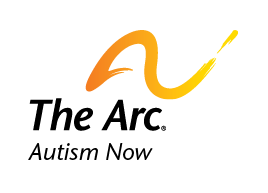Autistic Body Language
By Alyssa Z of the Autistic Self-Advocacy Network (ASAN)
Our body language isn’t really inherently unreadable. In Quiet Hands, Julia mentioned that her sister could read her hands and understand what Julia was thinking from it. I have friends who can make a pretty good guess what’s going on from how I’m flapping or rocking. They know that if I’m not doing anything at all and sitting properly still, either I am attempting to fall asleep or something is horribly wrong. They can read my autistic body language, as different from neurotypical body language as it may be. So I paid attention. Different ways of flapping really do mean different things. That’s probably no surprise to anyone who really pays attention to the autistic people they know, but it still needs saying. Behavior, after all, is communication, and stimming is behavior.
Jumping and flapping means excited. One arm flapping stiffly behind me means I am trying to think of a word. (I can’t words!) Handing me my computer might be a good idea if you know where it is, since I can words better with it.
One hand flapping a bit at my sides? I’m probably trying to be discrete, and excited isn’t the reason that I’m flapping either.
Both hands, right in front of my face? Something scared me, and now I’m reacting. How far in front of my face is a decent indicator of how far away the thing that scared me is.
Jiggling a leg? Fidgety. Drumming? Check for headphones. If I’m wearing them, it’s because of music. If not, you’re probably misreading the scared flap as drumming. People do that, sometimes.
Just drop the idea that autistic body language has to use the same cues as neurotypical body language. Drop the idea that the tone of my voice means much of anything. Drop the idea that the usual cues work. Use the ones that actually seem to apply. Use what I’ve told you. You’ll get mine. Ask the people you know what different stims mean. Ask why they do them. Ask if there’s a reaction that would help most for any distressed ones. Listen. If the answer is “offer me a way out of the situation, but listen if I don’t take you up on it,” then next time you see that stim, offer.
Anyone who can read body language in general can learn to read the body language of autistic people who send cues that way, even really unusual cues that have nothing to do with the neurotypical ones. It takes work, but it can be done. With the emphasis that most people seem to put on body language, learning the different languages of the autistic people in your life is worth the time, and they’ll probably be glad you did, too! Having people understand rather than deny things based on the wrong tone or the wrong gesture is something that we should be able to expect, and you can make a start by learning.
One thought on “Autistic Body Language”
Leave a Reply
You must be logged in to post a comment.


Pingback: [D] Autistic Body language – happymeimeiblog